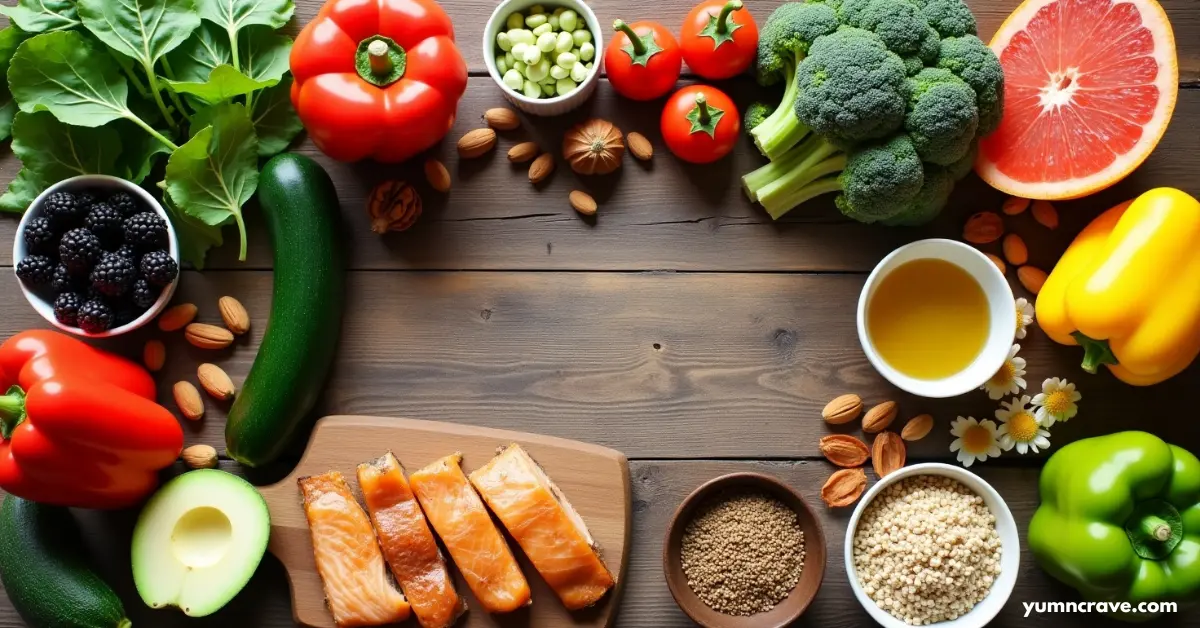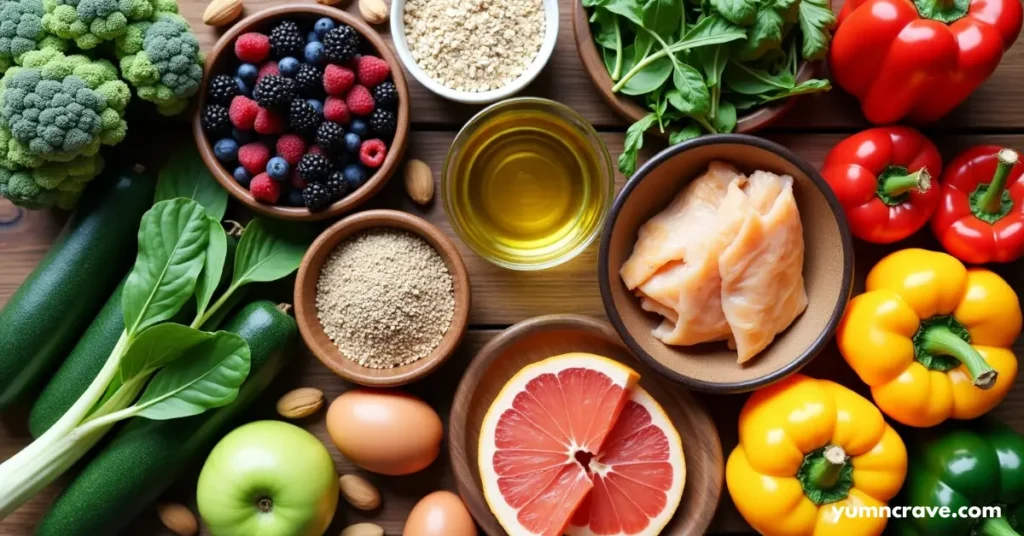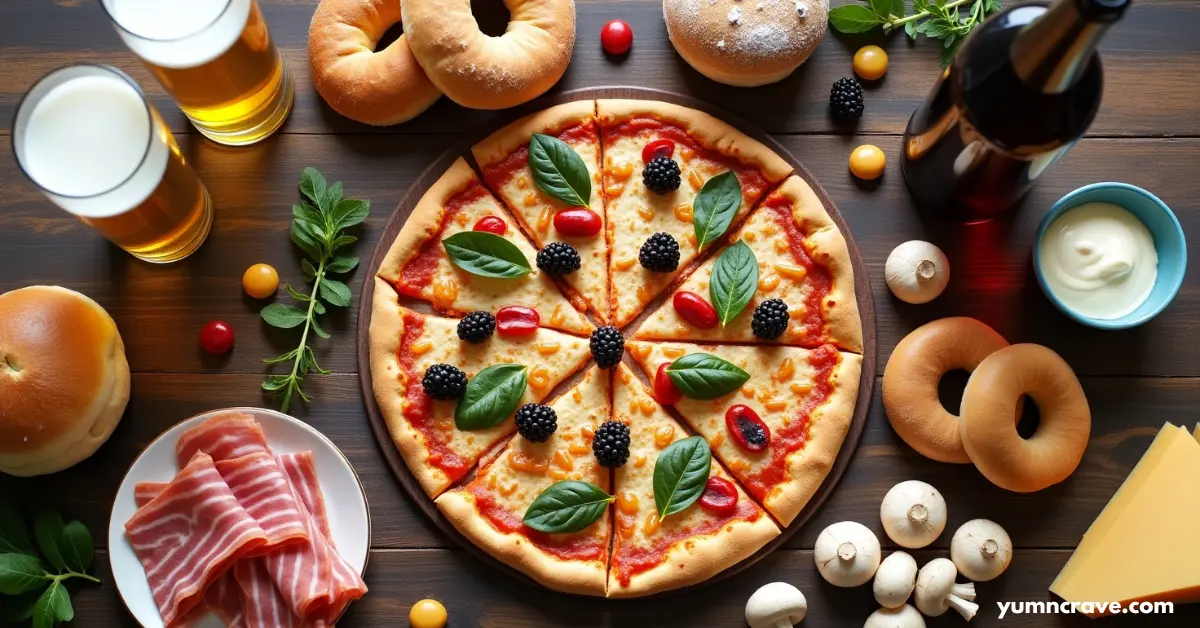Living with constant bloating, sugar cravings, or recurring yeast infections can feel frustrating. Many people discover that following a yeast-free diet helps ease these symptoms and supports better gut health. If you’ve been searching for the best yeast free diet food list that actually works, you’re in the right place.
In this guide, we’ll break everything down in simple language. You’ll learn:
- What a yeast-free diet is and why people follow it
- The complete yeast-free food list (with easy examples)
- What foods to avoid (and why)
- Simple meal ideas to get started
- Helpful tips to stay consistent
Let’s dive in step by step.
What is a Yeast-Free Diet?
A yeast-free diet is a way of eating that avoids foods containing yeast, mold, or ingredients that feed yeast (like refined sugar).
The main reason people choose this diet is to reduce Candida overgrowth. Candida is a natural yeast that lives in your gut, but when it grows out of balance, it may cause:
- Bloating and digestive issues
- Fatigue or brain fog
- Skin problems (rashes, acne, fungal infections)
- Frequent yeast infections
By avoiding yeast-rich foods and eating more nutrient-dense whole foods, many people report feeling lighter, clearer, and more energetic.
The Best Yeast Free Diet Food List That Actually Works
Here’s a detailed breakdown of yeast-free foods you can enjoy. This list is divided into categories so you can plan meals easily.
1. Vegetables (Eat Plenty Every Day)
Vegetables are the foundation of a yeast-free diet. They are rich in fiber, vitamins, minerals, and they don’t feed yeast.
Best choices:
- Leafy greens: spinach, kale, lettuce, collard greens, arugula
- Cruciferous veggies: broccoli, cauliflower, Brussels sprouts, cabbage
- Non-starchy veggies: zucchini, cucumber, asparagus, celery, bell peppers, green beans
- Root vegetables in moderation: carrots, beets, turnips, radishes
- Herbs: parsley, cilantro, dill, basil
👉 Tip: Avoid starchy vegetables like potatoes and corn in the beginning. They can turn into sugar in the body, which may feed yeast.
2. Fresh, Low-Sugar Fruits
Fruit can be tricky because yeast loves sugar. The key is to choose low-sugar fruits and eat them in small portions.
Best choices:
- Berries (blueberries, raspberries, strawberries, blackberries)
- Green apples
- Lemons and limes
- Grapefruit
- Avocado (technically a fruit but very low in sugar)
👉 Avoid bananas, grapes, mangos, and dried fruit—they’re high in sugar.
3. Proteins (Keep You Full and Balanced)
Protein helps stabilize blood sugar and supports immune health. Choose clean, whole sources without added yeast or processed coatings.
Best choices:
- Fresh poultry (chicken, turkey)
- Fresh fish and seafood (salmon, cod, sardines, shrimp)
- Eggs
- Lean beef or lamb (preferably grass-fed)
- Plant-based proteins: lentils, chickpeas, black beans, quinoa (check tolerance, since some legumes may cause bloating)
4. Grains and Starches (Yeast-Free Options)
Bread and baked goods usually contain yeast. But you can still enjoy grains—just pick the yeast-free ones.
Best choices:
- Brown rice
- Quinoa
- Oats (gluten-free, plain)
- Buckwheat
- Millet
- Amaranth
👉 Avoid white bread, pastries, and anything made with baker’s yeast.
5. Healthy Fats (Essential for Energy)
Healthy fats help keep you satisfied and support brain and hormone health.
Best choices:
- Olive oil
- Coconut oil
- Avocado oil
- Nuts and seeds: almonds, walnuts, chia seeds, flaxseeds, sunflower seeds
- Avocado
👉 Avoid peanuts and pistachios since they may carry mold.
6. Beverages (Stay Hydrated)
Hydration is key for flushing toxins out of the body. Stick to clean, yeast-free drinks.
Best choices:
- Water (plain or with lemon)
- Herbal teas (ginger, peppermint, chamomile)
- Green tea (unsweetened)
- Coconut water (unsweetened)
👉 Avoid alcohol, soda, and sweetened drinks—they all feed yeast.
7. Herbs, Spices, and Condiments
Seasoning food makes your diet enjoyable. Luckily, many herbs and spices are naturally anti-fungal.
Best choices:
- Garlic (powerful yeast-fighter)
- Ginger
- Turmeric
- Cinnamon (in moderation)
- Oregano (especially oregano oil)
- Sea salt, black pepper
👉 Avoid soy sauce, vinegar (except apple cider vinegar), ketchup, and mustard that contains sugar.

Foods to Avoid on a Yeast-Free Diet
Knowing what to avoid is just as important as knowing what to eat. These foods either contain yeast, mold, or feed yeast overgrowth.
🚫 Foods to avoid:
- Bread, pastries, pizza, crackers made with yeast
- Beer, wine, and alcohol
- Processed meats (salami, bacon, sausages with additives)
- Aged cheeses (they often contain mold)
- Mushrooms (fungus family)
- Fermented foods (soy sauce, kombucha, vinegar—except raw apple cider vinegar)
- High-sugar fruits (bananas, grapes, mangos, dates, dried fruit)
- Refined sugar and artificial sweeteners
- Packaged snacks (chips, cookies, candy)
Sample Yeast-Free Meal Plan
Here’s a simple day on a yeast-free diet.
Breakfast
- Scrambled eggs with spinach and avocado
- Herbal tea or lemon water
Lunch
- Grilled chicken salad with leafy greens, cucumber, and olive oil dressing
- Side of quinoa
Snack
- Handful of almonds and a few blueberries
Dinner
- Baked salmon with roasted broccoli and zucchini
- Brown rice on the side
Evening
- Chamomile tea
Tips to Make the Yeast-Free Diet Work
- Plan ahead – Meal prep helps you avoid grabbing yeast-filled snacks.
- Read labels – Yeast hides in many packaged foods under names like “autolyzed yeast extract.”
- Go slow with fruit – Start with very small amounts of low-sugar fruits.
- Support gut health – Some people add probiotics, but choose ones without yeast.
- Stay consistent – It usually takes a few weeks to notice major changes.
Benefits of a Yeast-Free Diet
When you stick to the best yeast free diet food list, you may notice:
- Reduced bloating and digestive issues
- Clearer skin
- More energy and less brain fog
- Balanced sugar cravings
- Stronger immune system
Final Thoughts
Following a yeast-free diet may feel overwhelming at first, but with the right food list, it becomes simple. Focus on whole, natural foods—vegetables, clean proteins, healthy fats, and yeast-free grains. Avoid sugars, breads, alcohol, and fermented foods that can trigger yeast overgrowth.
The best yeast free diet food list that actually works is not about restriction, but about nourishing your body so yeast can’t thrive. With consistency, you may notice lighter digestion, clearer skin, more energy, and fewer cravings.
If you’re dealing with stubborn yeast symptoms, this food list could be the game-changer you’ve been looking for.
FAQS
How long should I follow a yeast-free diet?
Most people follow it for 4–12 weeks, depending on symptoms. Some make it a long-term lifestyle.
Can I eat out on a yeast-free diet?
Yes—choose grilled meats, steamed veggies, salads with olive oil, and skip bread, sauces, or fried items.
Do I need to avoid gluten?
Not necessarily, but many people feel better avoiding both yeast and gluten at the same time.
Is coffee allowed?
Yes, plain black coffee is allowed, but limit it since too much caffeine can stress digestion.


